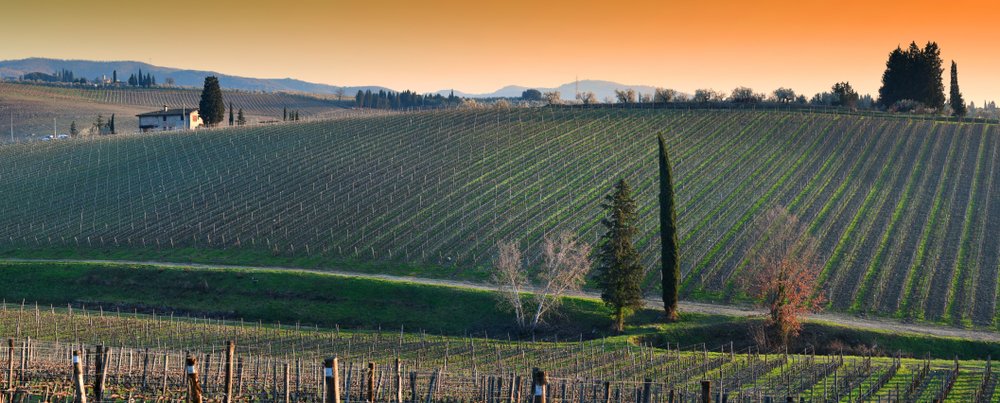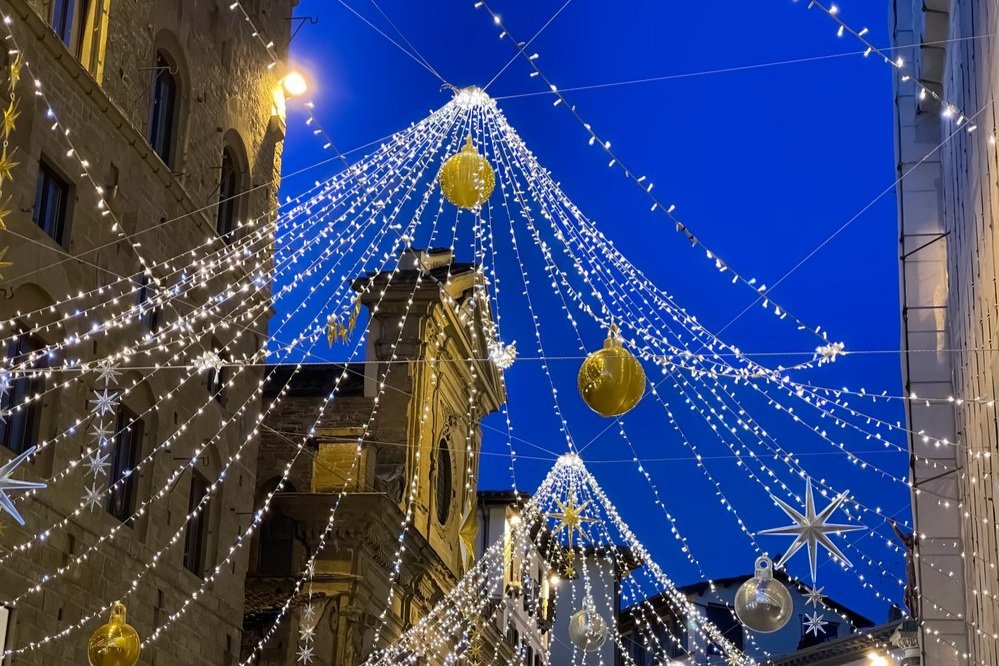Tuscany in the Low Season
Dr Kathleen Olive
We’re all familiar with those evocative images of Tuscany in spring and summer, with lines of cypresses that march up hills covered in wheat and poppies or endless fields of sunflowers. But it’s also true that Tuscany in summer, and even well into autumn, can be humid and stiflingly hot, and this year there’s talk about the high season crowds being even bigger than they were before COVID.
There are no prizes for guessing why so many travellers flock to Tuscany in a high season that now stretches from late March to November. The landscape is iconic, the galleries and museums are filled with the world’s most superlative collections of medieval and Renaissance Italian art, and there’s never a bad time to sample Tuscan wines, from Chianti to Montepulciano’s vino nobile and Brunello di Montalcino
But this region’s significance as a centre for art, culture, language and literature is so crucial to the formation of our modern idea of Italy that it deserves time to stop and contemplate. It can be hard to push beyond the surface of the Uffizi, the Leaning Tower of Pisa or Lucca’s city walls when crushed shoulder-to-shoulder with other travellers or when dealing with restauranteurs and hoteliers who are already exhausted by the endless parade of faces.
A step back in time
My favourite time to travel in Tuscany has always been the low season, particularly in December and January when the November rains are less likely to swell the rivers and when the weather back home often has little to recommend it. The cobbled streetscapes of Tuscany’s towns and cities come back to life as the tourist crowds retreat, with seasonal festivities offering locals an opportunity to reclaim the public spaces that they’ve been carefully shaping since the twelfth century.
It’s more or less then that most historians fix the beginning of the Tuscan boom, when a combination of industries like textile production, international banking and trade, self-governance and widespread education for boys began to change the cultural landscape of central Italy.
Towns such as Pisa, Lucca, Florence and Siena experienced a population boom in the Middle Ages, and by the thirteenth and fourteenth centuries the Arno River valley had become the most densely inhabited place in Europe. Peasants were increasingly drawn to these urban centres, seeking to improve their families’ lot with new professional opportunities and ensuring that each generation enjoyed life in bustling and increasingly well-organised towns. Looking at the Black Death of 1348 in context, there was only a small interruption to Tuscany’s sustained growth and by the beginning of the fifteenth century there was no stopping these powerhouse towns of the Italian peninsula.
As their wealth and learning increased, medieval Tuscan burghers also became discerning and sophisticated patrons of the arts, endowing chapels, churches, palaces and town halls with outstanding works of art that are still justly celebrated. Ambrogio Lorenzetti’s Cycle of Good and Bad Government is the most significant artwork on a secular topic since Roman times, still painting a vivid picture in Siena’s town hall – almost 700 years after its creation – of what a state governed by just, wise and learned councillors could look like. Benozzo Gozzoli’s frescoes for the Medici family’s private chapel in Florence give us arresting portraits from life of middle-class merchants and bankers on the verge of their elevation to popes and grand dukes. And Pisa’s Leaning Tower of Pisa is part of a much bigger cityscape that demonstrates how much a city’s fortunes, population and artistic culture could grow after participation in a medieval crusade.
The difference winter makes
In many ways, it can be easier to appreciate this historical context outside of the high season. Tuscany’s many museums and galleries are at their best then, when attendants have more time to step forward and offer a personal perspective on the priceless works they guard day after day. It’s also easier to take advantage of cumulative tickets and return visits to major collections in the Uffizi, Pitti Palace or cathedral museums of the larger towns when you don’t have to queue to enter!
And it’s not just in cultural institutions that a more personal experience is possible: waiters have more time to recommend regional specialties at their best in the colder months, from a slow-cooked Chianina ragù to seasonal delights such as forest mushrooms or the hearty Tuscan ribollita soup. Locals are more likely to engage patiently with a beginner’s Italian, and my favourite aspect of long off-season stays in provincial Tuscan centres is the speed with which the local barista learns your coffee order. After two or three days of consecutive patronage, your morning coffee is presented with a courteous Buongiorno only minutes after you step inside the bar.
One of Tuscany’s most attractive aspects is its history as a wine region, and it has over fifty wines certified as either DOC (Controlled Origin Denomination) or DOCG (Guaranteed Controlled Origin Denomination, Italy’s highest appellation). Tuscan wineries are busy with the vendemmia or harvest in autumn, but in winter the vintners turn their attention to pruning the vines. It’s a great opportunity to watch them as they carefully examine up to thousands of plants, making sure to select the branches that bore good fruit in the previous year and to ruthlessly excise the less-productive ones for burning, often in bonfires during the later Carnival season. And then, of course, a tasting of a so-called Super Tuscan red wine wouldn’t go astray, either.
Winter in Tuscany is usually bright and clear, so it’s still possible to appreciate the contours of the landscape and the distinctive and evergreen olives and cypresses. In recent years a number of Tuscan wineries have begun investing in collections of art, sculpture and design, so in addition to architect-designed cellars and excellent restaurants, there are small museums and sculpture parks to explore at places like Il Borro, Antinori in Chianti Classico and Castello di Ama. In addition to cutting-edge architecture from the likes of Renzo Piano and Zaha Hadid, numerous Tuscan wineries also preserve historic works of art, such as a precious fifteenth-century Last Supper by Ghirlandaio that is tucked inside Antinori’s Badia a Passignano.
Of course, Tuscany’s delights await cultural travellers all year round. But there is an intimacy created by the crisp air, the families taking a passeggiata or stroll under the twinkling lights in hill-top towns, and the private moments to be enjoyed in quiet museums and galleries.
That’s why I’ll always be happy to explore winter in Tuscany.
DR KATHLEEN OLIVE
Kathleen Olive is a well-known cultural tour leader and has led groups to Italy, France, Spain, the USA and Japan for over fifteen years. She regularly offers popular lectures on art, history and culture, including for the Australian Decorative and Fine Arts Society (ADFAS). READ MORE
RELATED TOURs
WINTER IN TUSCANY
January 2024
Explore the best of Tuscany’s medieval and Renaissance art and architecture, on this two-week long stay tour timed to take advantage of off-season travel.





